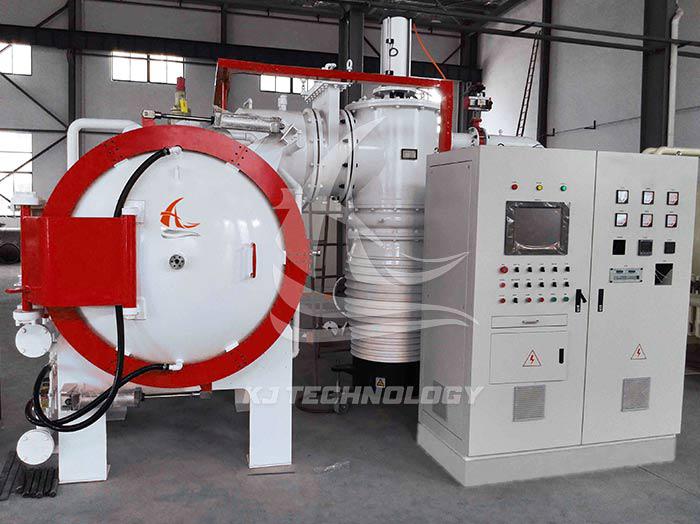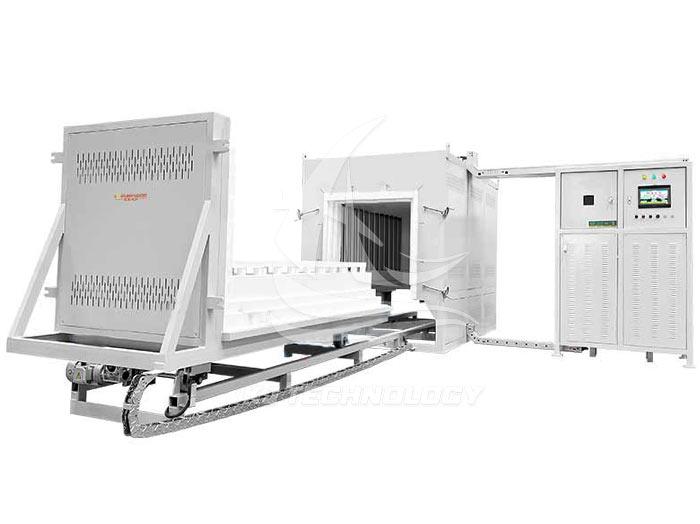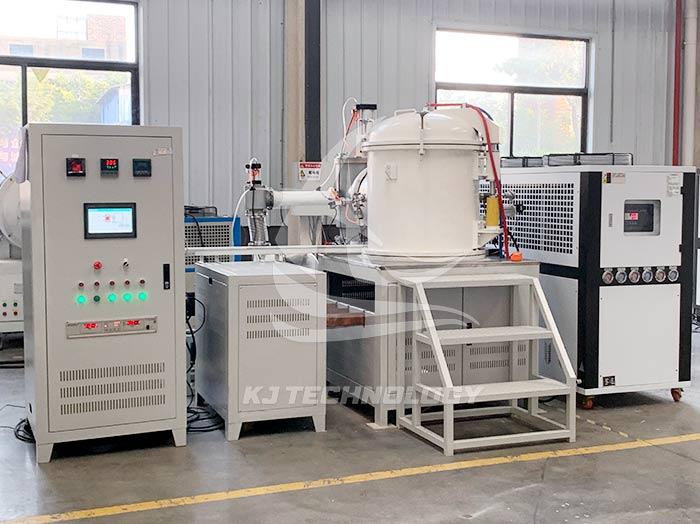Application of Vertical Graphite Vacuum Furnace in the New Energy Industry
 09-03-2025 Author: KJ technology
09-03-2025 Author: KJ technology
The application of vertical graphite vacuum furnaces in the new energy industry mainly focuses on two core areas: the preparation of negative electrode materials for lithium-ion batteries and the development of new carbon based materials. Through the high-temperature vacuum environment and the unique properties of graphite materials, it significantly improves material purity, electrochemical performance, and production efficiency. The specific application scenarios and analysis are as follows:
1. Preparation of negative electrode materials for lithium-ion batteries: improving performance and reducing costs
Graphitization treatment of negative electrode material
The vertical graphite vacuum furnace purifies and graphitizes artificial graphite/natural graphite in a high-temperature vacuum environment above 2600 ℃. By removing volatile components (such as moisture and residual organic matter) and metal impurities (such as iron and nickel) from the material, the purity of the material is significantly improved, thereby increasing battery capacity and cycle life. For example, in the manufacturing of electric vehicle batteries, graphite negative electrode materials processed by vacuum graphitization furnaces can meet the requirements of high energy density and long range.
Preparation of Silicon Carbon Composite Negative Electrode Material
In response to the capacity degradation problem caused by volume expansion of silicon-based negative electrode materials during charge and discharge processes, a vertical graphite vacuum furnace uses carbon coating technology in a high-temperature vacuum environment to uniformly disperse silicon particles in the graphite matrix, forming a stable silicon carbon composite structure. This process effectively suppresses the volume expansion of silicon, improves the structural stability of the negative electrode material, and enhances the cycle life of the battery.
2. Development of new carbon based materials: promoting technological innovation and industrial upgrading
Preparation of Graphene
A vertical graphite vacuum furnace uses chemical vapor deposition (CVD) technology to decompose carbon source gases such as methane in a high-temperature vacuum environment, and grows single-layer or multi-layer graphene on substrates such as copper foil. The graphene prepared by this process has high electron mobility and a large specific surface area, showing great potential for applications in fields such as conductive agents for lithium-ion batteries and electrodes for supercapacitors. For example, adding graphene conductive agent to power batteries can reduce internal resistance and improve charging and discharging efficiency.
Synthesis of carbon nanotubes
The vertical graphite vacuum furnace adopts the floating catalytic chemical vapor deposition (FCCVD) process to synthesize high-purity carbon nanotubes by catalyzing the decomposition of carbon source gases such as acetylene through catalysts (such as iron and cobalt) in a high-temperature vacuum environment. The carbon nanotubes prepared by this process have high aspect ratio and excellent conductivity, and have been widely used in the modification of negative electrode materials for lithium-ion batteries, conductive plastics, and other fields. For example, adding carbon nanotubes to graphite negative electrode materials can construct a three-dimensional conductive network and enhance the conductivity of the material.
3. Fuel cells and energy storage material processing: expanding application boundaries
Preparation of bipolar plates for fuel cells
The vertical graphite vacuum furnace improves the conductivity and corrosion resistance of graphite bipolar plates through graphitization treatment in a high-temperature vacuum environment (reducing corrosion rate by more than 50% in acidic environments), meeting the long-term stable operation requirements of fuel cells. For example, in hydrogen fuel cells, graphite bipolar plates treated by vacuum graphitization furnaces can effectively reduce the internal resistance of the cell and improve output power.
Solid state electrolyte material sintering
In response to the demand for high ion conductivity electrolyte materials in solid-state batteries, a vertical graphite vacuum furnace is used to sinter solid-state electrolyte materials such as sulfides and oxides in a high-temperature vacuum environment. By precisely controlling temperature and atmosphere, eliminating internal defects in materials, and improving ion conductivity, key material support is provided for the commercial application of solid-state batteries.








